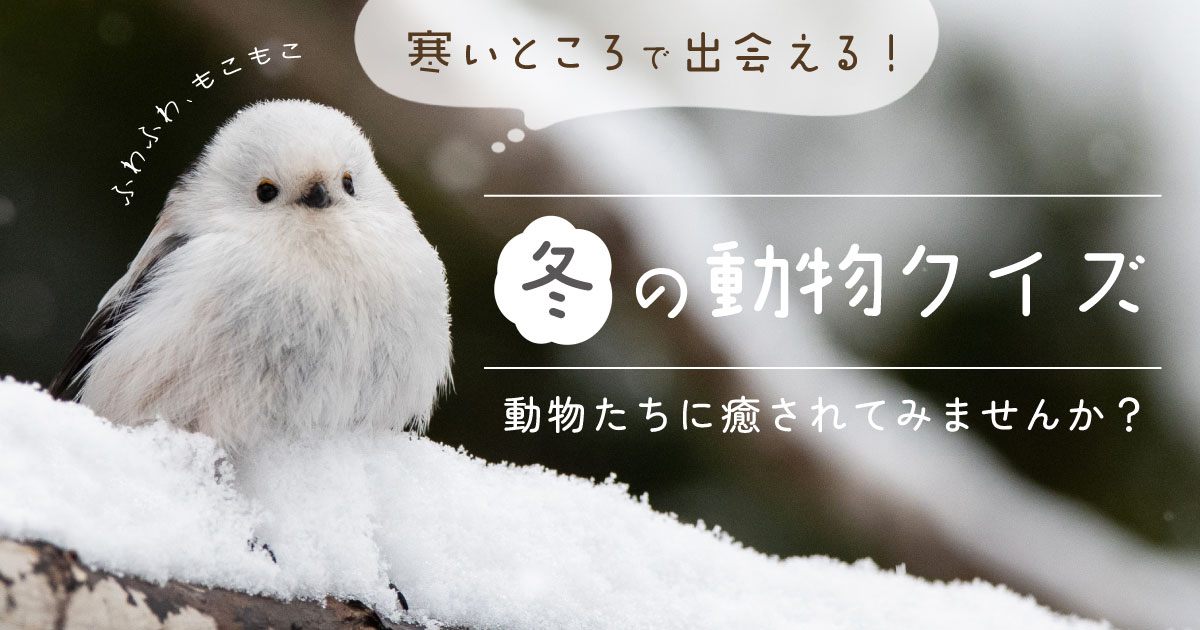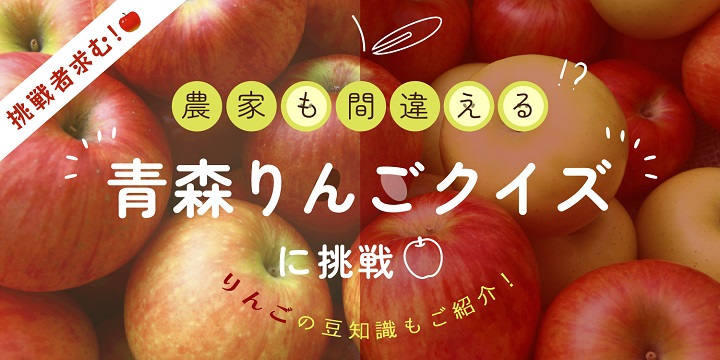Star Festival Tanabata

Tanabata, the Star Festival, is a traditional Japanese event in which people write their wishes on strips of paper and decorate bamboo leaves with them. Tanabata is now a traditional Japanese event, but did you know that it originally came from China?
This article explains the origin and history of Tanabata, as well as the meaning of Tanzaku and bamboo decorations. Also, food culture and regional customs related to Tanabata will be mentioned below.
You will find the Tanabata quiz at the bottom of this article. Try it out!
What is Tanabata?
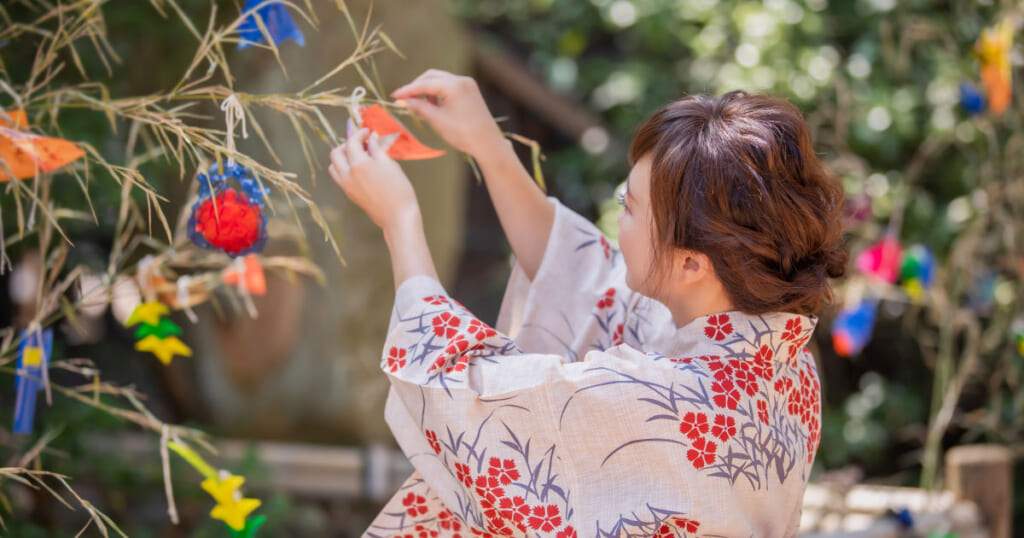
Tanabata is a traditional event that has been held in Japan since ancient times, and is celebrated on July 7 every year. The custom of hanging strips of paper and ornaments with wishes on them on bamboo leaves is a popular summer tradition.
Many children in Japan write their wishes on strips of paper called tanzaku at school or other events.
It is said that the event was originally held in China and came to Japan.
Origin and History
The origin of Tanabata is related to the Chinese custom of "Kikkouden," which is a custom of praying to the Weaver Star on the night of July 7 for improvement in weaving, sewing, and other skills. Needles and other objects are displayed on an altar in the garden, and prayers are offered to the star.
After the Kikkouden was introduced to Japan in the Nara period (710-794), Tanabata became a courtly event. At that time, people did not have the custom of hanging strips of paper on bamboo branches, but instead wrote poems on the leaves of the Kaji tree, which was considered a sacred tree, to wish for improvement in calligraphy.
Since the Edo period (1603-1867), Tanabata was regarded as one of the five big festivals and spread among the citizens. The five festivals are festive days with odd numbers that were introduced from China. Around this time, the custom changed to decorating bamboo branches hung with tanzaku with their wishes and paper ornaments.
It is said that good wish for improvement in one's studies, since Tanabata was originally a custom to wish for improvement in weaving, sewing, calligraphy and other artistic pursuits.
Orihime and Hikoboshi
The Tanabata legend of Orihime and Hikoboshi is well known in Japan, but this too is a legend that originated not in Japan but in China.
Shokujo, the daughter of the emperor who is regarded as the most powerful god in the sky, was in charge of weaving cloth for the gods' kimonos, and weaved daily by the banks of the Milky Way.
When the emperor sees the girl who works all the time and has no lover, he brings the weaver girl together with Kengyu, an earnest young man who has a cow on the other side of the Milky Way.
They eventually married and lived happily ever after, but after their marriage, they began to spend their days playing and neglecting their work. This angered the Emperor of Heaven, who separated them on both banks of the Milky Way.
However, the two were so grief-stricken that they lived in tears and could not get any work done. Troubled, the Emperor of Heaven allowed them to cross the Milky Way, promising to let them meet only once a year on the night of July 7, if they would work diligently.
In Japan, the weaver is called Orihime and the checker is called Hikoboshi.
Back to Table of ContentsTanzaku and Bamboo Grass Decorations

During Tanabata, people hang decorations made of tanzaku strips and origami paper on bamboo branches. Each bamboo branch decoration has its own wish and meaning.
Five Colors of Tanzaku
Basically, there are five colors for the tanzaku, and they are green, red, yellow, white, and black based on the Chinese theory of Yin-Yang and the Five Elements. The theory of Yin-Yang and the Five Elements is based on the idea that everything in nature can be explained in terms of the five elements of wood, fire, earth, metal, and water. According to the Yin-Yang Five Elements Theory, green represents wood, red represents fire, yellow represents earth, white represents gold, and purple represents water.
Each color of tanzaku has its own meaning, and it is said that if you write your wish on a tanzaku of the appropriate color, your wish will be more likely to come true.
Green: build up virtue and enhance human power
Red: gratitude to parents and ancestors
Yellow: trust and care for others
White: heart to keep duty and rules.
Purple: improvement of academic performance
In modern Japan, people still make wishes on tanzaku, but they may be less conscious of even the color of the tanzaku.
The Meaning of the Decoration
There are several types of origami decorations, and the seven decorations, including tanzaku, are called Nanatsukazari. Let's take a look at the meanings of the six decorations other than tanzaku introduced in the previous chapter.
Fukinagashi (Tanabata Windsock)
This decoration represents the threads that Orihime weaves and wishes for improvement in weaving and sewing.
Kuzukago (Wastebasket)
It is meant to foster a spirit of cleanliness, thrift, and tidiness.
Toami (Casting net)
It represents a fishing net to catch fish, and is hung in the hope of a big catch.
Orizuru (Paper crane)
These decorations are used to wish for family safety and longevity. It may be made into 1,000 paper cranes.
Kamiko (Paper coat)
Origami paper is folded into the shape of dolls and kimonos, and hung in hopes of improving one's sewing skills.
Kinchaku (Pouch)
It means a wallet, and is a decoration for money and savings.
Back to Table of ContentsFood Culture
Tanabata is one of the five seasonal festivals, and in each of the five festivals, there is a tradition to ward off evil spirits by eating foods that ward off evil spirits in each season. In addition, some regions have their own food culture related Tanabata, each with its own meaning and origin. Here are three typical Tanabata foods.
Somen Noodles
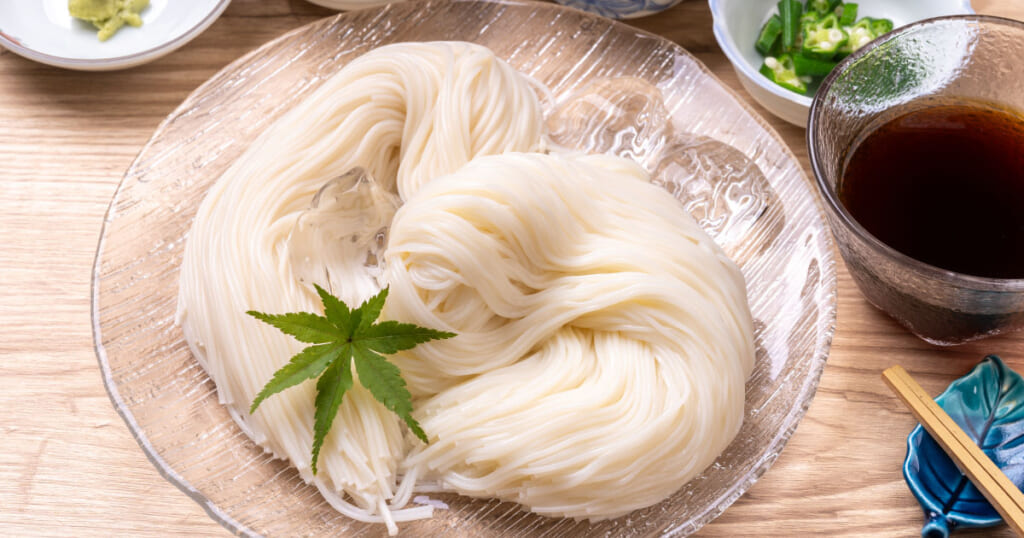
Somen noodles is a typical Japanese Tanabata food. There are various theories as to how Somen came to be eaten on Tanabata, with some saying that it was made to resemble the Milky Way and others saying that it was made to resemble the weaving thread of an orihime (a princess weaver). July 7 is designated as Tanabata and Somen Day as an essential food for the five festivals.
Sakubei
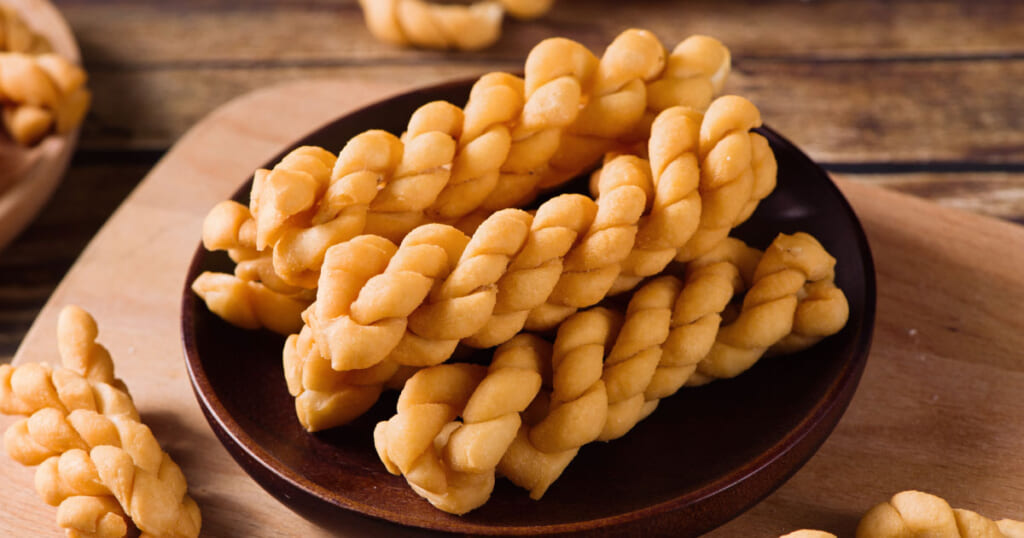
Sakubei are a traditional Chinese food made by kneading wheat and weaving it into a rope-like shape. In China, people eat cable cakes on July 7 to pray for good health.
Somen is said to have its roots in somen, which was introduced from China and is said to have changed from Sakubei to somen noodles.
Houtou
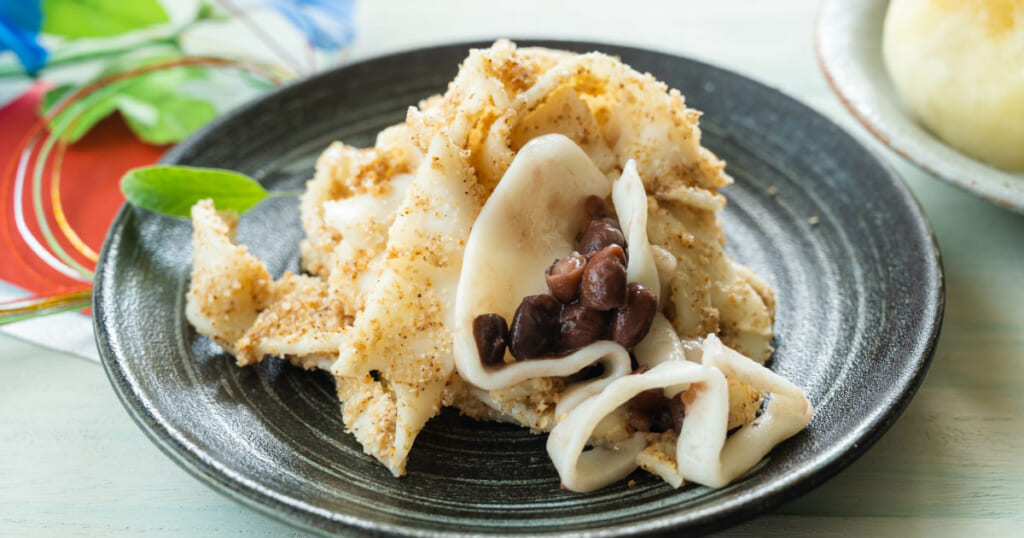
In the Matsumoto area of Nagano Prefecture, Tanabata Festival is held on August 7, a month later than usual, and there is a custom of eating Tanabata Houtou as an event food. Houtou is a thick noodle made of wheat flour.
Tanabata houtou is a cool, refreshing food made by twisting sticky houtou with azuki bean bean paste and cooling it slightly before eating.
Generally, white noodles are used, but recently there are noodles with yomogi (mugwort), and sometimes they are covered with kinako (soybean flour) instead of azuki bean paste.
Reference Tanabata Houtou|Ministry of Agriculture, Forestry and Fisheries of Japan
Back to Table of ContentsTanabata Quiz
Here is our Tanabata quiz! Try it now and test your knowledge.
Back to Table of Contents
Summary
Tanabata is a famous Japanese summer tradition. However, few people may know the origin of the event.
You may enjoy Tanabata more by learning about the origin of Tanabata and the meaning behind the bamboo decorations.
The above quiz was created with QuizGenerator, which allows you to create your own quizzes and share them on social media or websites for free without registration.
On the QuizGenerator website, anyone can easily try AI-powered quiz generation simply by entering text. AI Quiz is also available for free. We hope you enjoy creating your original quizzes with AI!
▼You may also like:
Back to Table of Contents Back to Blog List
